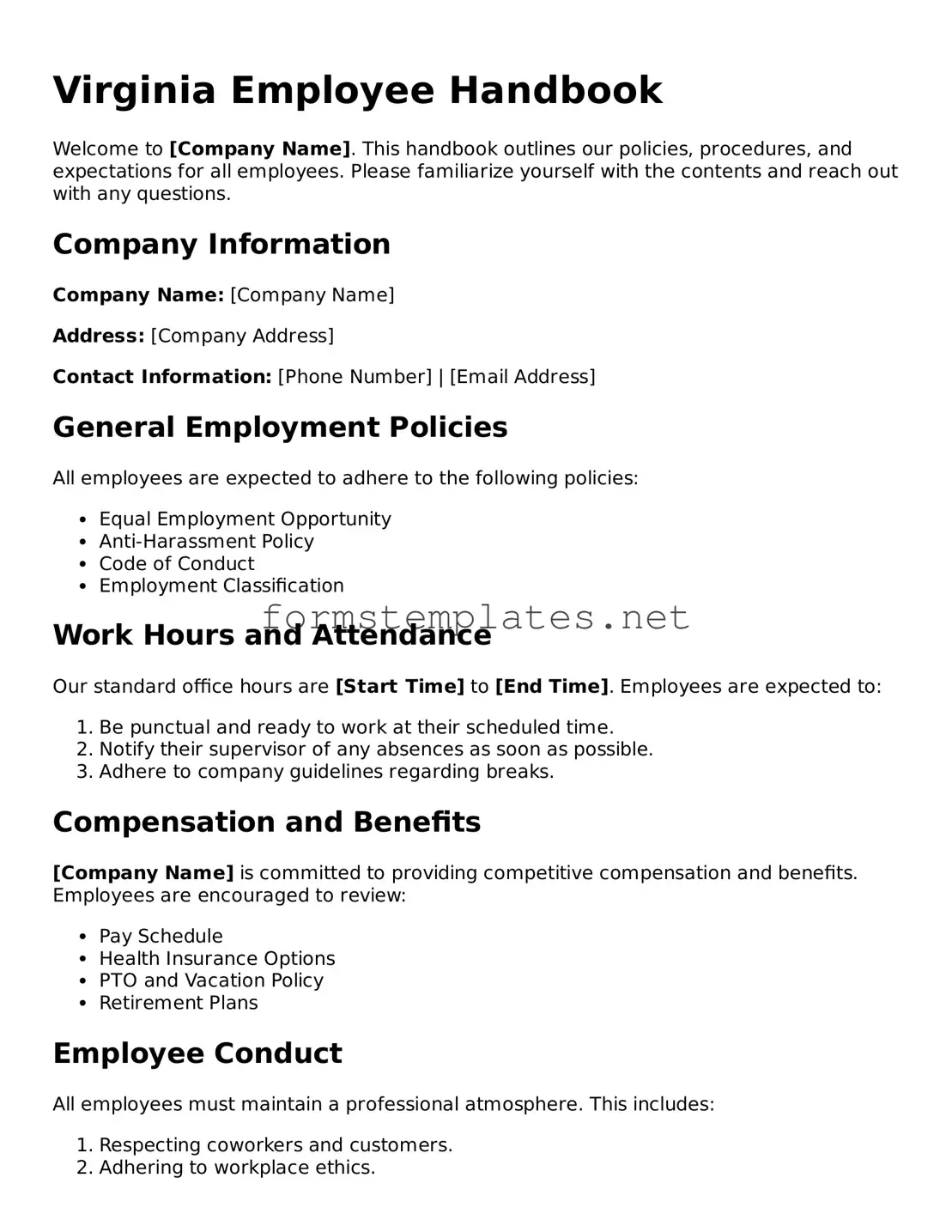Virginia Employee Handbook
Welcome to [Company Name]. This handbook outlines our policies, procedures, and expectations for all employees. Please familiarize yourself with the contents and reach out with any questions.
Company Information
Company Name: [Company Name]
Address: [Company Address]
Contact Information: [Phone Number] | [Email Address]
General Employment Policies
All employees are expected to adhere to the following policies:
- Equal Employment Opportunity
- Anti-Harassment Policy
- Code of Conduct
- Employment Classification
Work Hours and Attendance
Our standard office hours are [Start Time] to [End Time]. Employees are expected to:
- Be punctual and ready to work at their scheduled time.
- Notify their supervisor of any absences as soon as possible.
- Adhere to company guidelines regarding breaks.
Compensation and Benefits
[Company Name] is committed to providing competitive compensation and benefits. Employees are encouraged to review:
- Pay Schedule
- Health Insurance Options
- PTO and Vacation Policy
- Retirement Plans
Employee Conduct
All employees must maintain a professional atmosphere. This includes:
- Respecting coworkers and customers.
- Adhering to workplace ethics.
- Following safety protocols at all times.
Termination Policy
Termination may occur due to:
- Performance issues.
- Policy violations.
- Company restructuring.
Acknowledgment
Employees must sign below to acknowledge receipt of the handbook and understanding of its contents:
Employee Name: __________________
Signature: _______________________ Date: _______________
